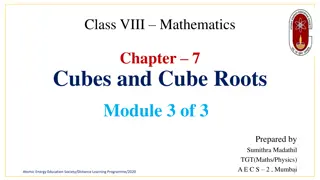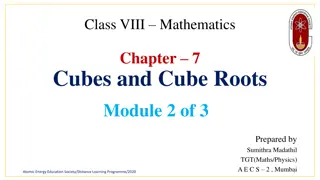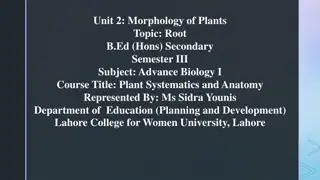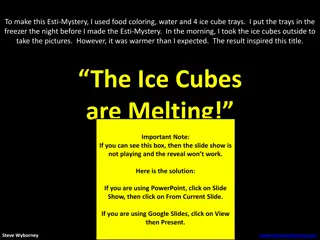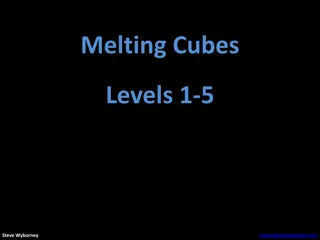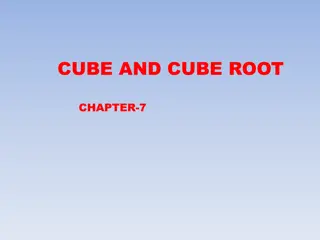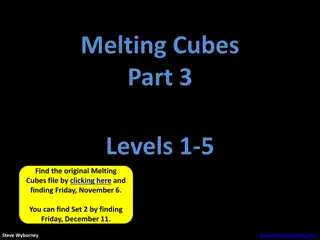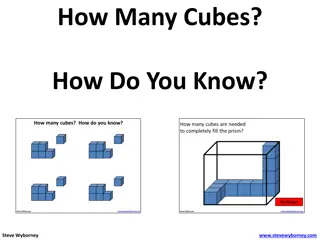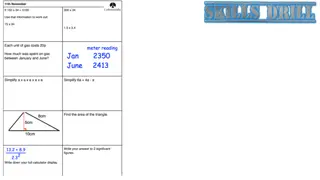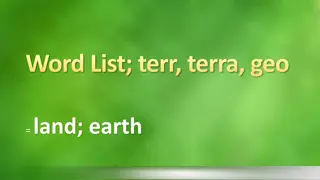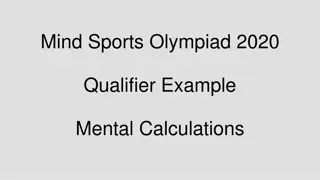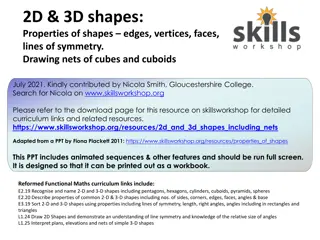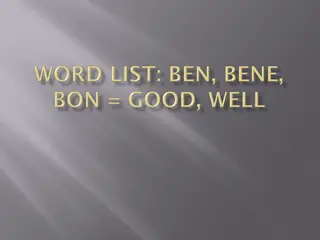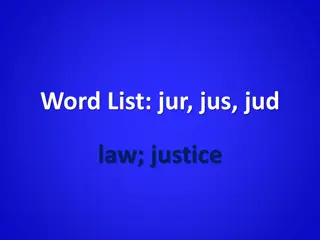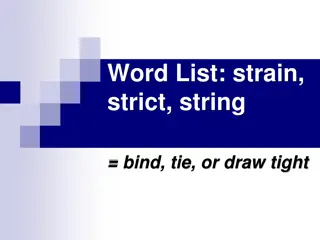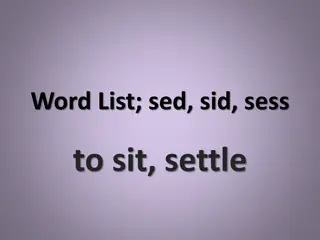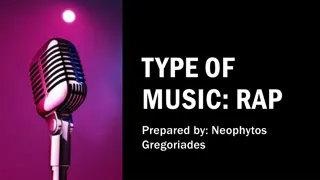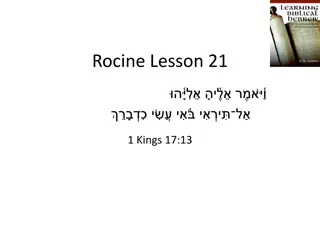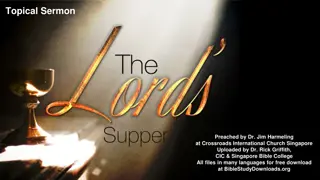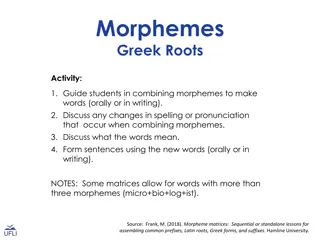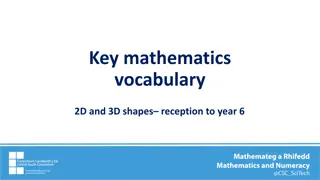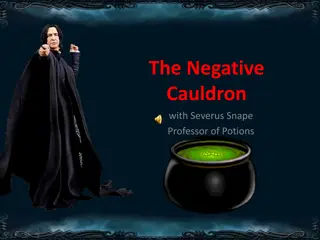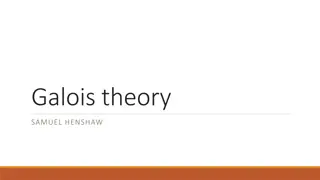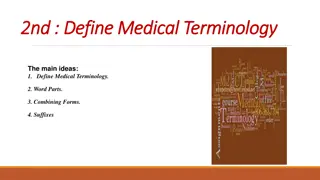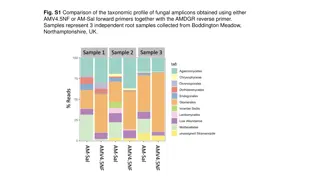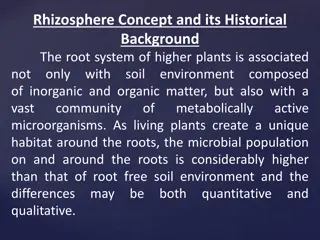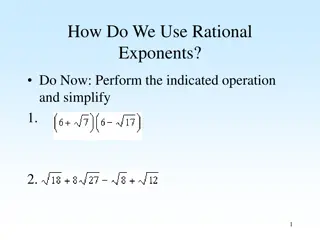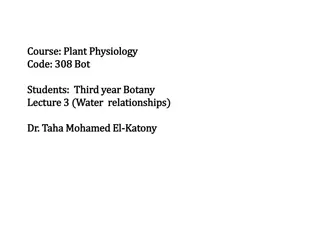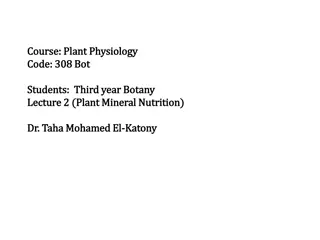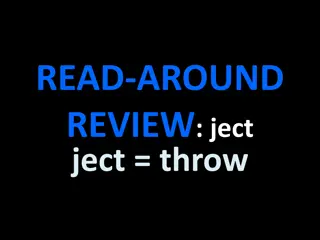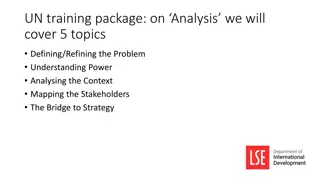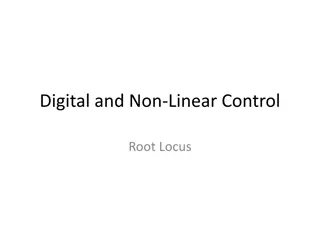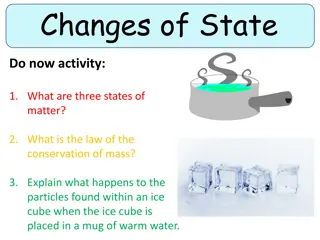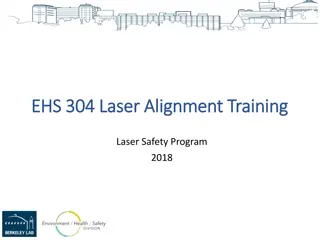Exploring Cubes and Cube Roots with Srinivasa Ramanujan
Delve into the fascinating world of cubes and cube roots through an engaging story featuring the legendary mathematician Srinivasa Ramanujan and G.H. Hardy. Learn about the concept of Hardy Ramanujan Number 1729 and discover the properties of cubes in geometry. Uncover the connection between numbers and cubes, and explore examples of Hardy Ramanujan Numbers beyond 1729.
Download Presentation

Please find below an Image/Link to download the presentation.
The content on the website is provided AS IS for your information and personal use only. It may not be sold, licensed, or shared on other websites without obtaining consent from the author. Download presentation by click this link. If you encounter any issues during the download, it is possible that the publisher has removed the file from their server.
E N D
Presentation Transcript
Class VIII Mathematics Chapter 7 Cubes and Cube Roots Module 1 of 3 Prepared by Sumithra Madathil TGT(Maths/Physics) A E C S 2 , Mumbai Atomic Energy Education Society/Distance Learning Programme/2020 1
An interesting story. Srinivasa Ramanujan G H Hardy Atomic Energy Education Society/Distance Learning Programme/2020 2
This is a story about one of Indias great mathematical geniuses, Srinivasa Ramanujan. Once another famous mathematician and his friend Prof. G.H. Hardy came to visit him in a taxi whose number was 1729. While talking to Ramanujan, Hardy said .. 3 Atomic Energy Education Society/Distance Learning Programme/2020
No, my friend. 1729 is indeed interesting. It is the smallest number that can be expressed as a sum of two cubes in two different ways. My taxi number,1729, is a dull number. 4 Atomic Energy Education Society/Distance Learning Programme/2020
Hardy Ramanujan Number 1729 = 1728 + 1 = 123 + 13 1729 = 1000 + 729 = 103 + 93 1729 has since been known as the Hardy Ramanujan Number, even though this feature of 1729 was known more than 300 years before Ramanujan. 5 Atomic Energy Education Society/Distance Learning Programme/2020
. 1729 is the smallest Hardy Ramanujan Number. There are an infinitely many such numbers. Example: (i) 4104 = 23 + 163 = 8 + 4096 4104 = 93 + 153 = 729 + 3375 (ii) 13832 = 183 + 203 = 5832 + 8000 13832 = 23 + 243 = 8 +13824 6 Atomic Energy Education Society/Distance Learning Programme/2020
CUBES The word cube is used in geometry. A cube is a solid figure which has all its sides equal. Figures which have 3-dimensions are known as solid figures. 7 Atomic Energy Education Society/Distance Learning Programme/2020
. How many cubes of side 1 cm will make a cube of side 2 cm? 8 cubes of side 1 cm will make a cube of side 2 cm. How many cubes of side 1 cm will make a cube of side 3 cm? 27 cubes of side 1cm will make a cube of side 3cm. 8 Atomic Energy Education Society/Distance Learning Programme/2020
. The numbers 1, 8, 27, ... are called perfect cubes or cube numbers. Each of them is obtained when a number is multiplied by taking it three times. 1 = 1 1 1 = 13 8 = 2 2 2 = 23 27 = 3 3 3 = 33 64 = 4 x 4 x 4 = 43 Atomic Energy Education Society/Distance Learning Programme/2020 9
. 10 Atomic Energy Education Society/Distance Learning Programme/2020
Cubes of numbers from 1 to 10. Number 1 Cubes 13 = 1 23 = 8 33 = 27 43 = 64 53 = 125 63 = 216 73 = 343 83 = 512 93 = 729 103 = 1000 Cubes of even numbers are even. 2 3 4 5 6 7 8 Cubes of odd numbers are odd. 9 10 11 Atomic Energy Education Society/Distance Learning Programme/2020
. There are only ten perfect cubes from 1 to 1000. They are : 13 = 1 x 1 x 1 = 1 23 = 2 x 2 x 2 = 8 33 = 3 x 3 x 3 = 27 43 = 4 x 4 x 4 = 64 53 = 5 x 5 x 5 = 125 63 = 6 x 6 x 6 = 216 73 = 7 x 7 x 7 = 343 83 = 8 x 8 x 8 = 512 93 = 9 x 9 x 9 = 729 103 = 10 x 10 x 10 = 1000 The one s digit of the cube of a number ending in 1 is 1, ending in 2 is 8, ending in 3 is 7, ending in 4 is 4, ending in 5 is 5, ending in 6 is 6, ending in 7 is 3, ending in 8 is 2, ending in 9 is 9, ending in 0 is 0. 12 Atomic Energy Education Society/Distance Learning Programme/2020
Some properties of cube numbers/perfect cubes 1. Cubes of even numbers are always even. Example: 2 3 = 8 4 3 = 64 6 3 = 216 12 3 = 1728 etc. 2. Cubes of odd numbers are always odd. Example: 1 3 = 1 3 3 = 27 5 3 = 125 11 3 = 1331 etc. 3. The cube of a negative number is always negative. Example: ( 3)3 = ( 3) x ( 3) x ( 3) = ( 27) ( 9)3 = ( 9) x ( 9) x ( 9) = ( 729) ( 14)3 = ( 14) x ( 14) x ( 14) = ( 2744) 13 Atomic Energy Education Society/Distance Learning Programme/2020
. 4. (a) If the one s digit of a number is 1, then the one s digit of its cube is also 1. Example: 113 = 1331 (b) If the one s digit of a number is 2, then the one s digit of its cube is 8. Example: 123 = 1728 (c) If the one s digit of a number is 3, then the one s digit of its cube is 7. Example: 233 = 12167 (d) If the one s digit of a number is 4, then the one s digit of its cube is also 4. Example: 143 = 2744 Atomic Energy Education Society/Distance Learning Programme/2020 14
. (e) If the one s digit of a number is 5, then the one s digit of its cube is also 5. Example: 253 = 15625 (f) If the one s digit of a number is 6, then the one s digit of its cube is also 6. Example: 163 = 4096 (g) If the one s digit of a number is 7, then the one s digit of its cube is 3. Example: 173 = 4913 Atomic Energy Education Society/Distance Learning Programme/2020 15
. (h) If the one s digit of a number is 8, then the one s digit of its cube is 2. Example: 183 = 5832 (i) If the one s digit of a number is 9, then the one s digit of its cube is also 9. Example: 193 = 6859 5. Number of zeroes at the end of a perfect cube is always a multiple of 3. So the number of zeroes at the end of a perfect cube can be 3, 6, 9, 12, . Example: 1000, 8000, 27000000, 1728000, 64000000000 etc. are all perfect cubes. Atomic Energy Education Society/Distance Learning Programme/2020 16
Practice Time . Practice Time . 1. How many perfect cubes are there from 1 to 100? There are only four perfect cubes from 1 to 100. They are 1, 8, 27 and 64. 2. (i) The one s digit of the cube of 149 is 9. (ii) The one s digit of the cube of 77 is 3. (iii) The one s digit of the cube of 5022 is 8. Atomic Energy Education Society/Distance Learning Programme/2020 17
. 3. Find the cubes of the following numbers: (a) 50 Cube of 50, 50 3 = 50 x 50 x 50 = 125000 (b) 72 Cube of 72 , 72 3 = 72 x 72 x 72 = 373248 (c) 300 Cube of 300, 300 3 = 300 x 300 x 300 = 27000000 Observe the number of zeroes Atomic Energy Education Society/Distance Learning Programme/2020 18
. 4. Is 9 a perfect cube ? No, as 9 = 3 3 and there is no natural number which multiplied by taking it three times gives 9. This shows that 9 is not a perfect cube. 5. Is 1728 a cube number? Yes, as 1728 is obtained by multiplying the number 12 three times; it is a cube number or a perfect cube. 1728 = 12 x 12 x 12 19 Atomic Energy Education Society/Distance Learning Programme/2020
What have we discussed ? Numbers like 1729, 4104, 13832, are known as Hardy Ramanujan Numbers. They can be expressed as the sum of two cubes in two different ways. Numbers obtained when a number is multiplied by itself three times are known as cube numbers or perfect cubes . For example 1, 8, 27, ... etc. Cubes of even numbers are even. Cubes of odd numbers are odd. Determining the one s digit of cube of a number ^*^*^*^*^*^* Atomic Energy Education Society/Distance Learning Programme/2020 20
. End of Module 1 of 3 Atomic Energy Education Society/Distance Learning Programme/2020 21


